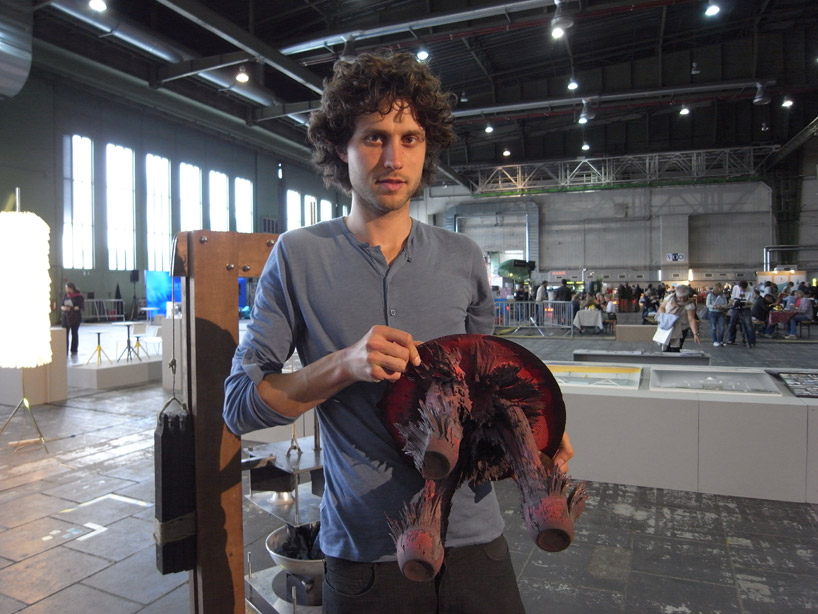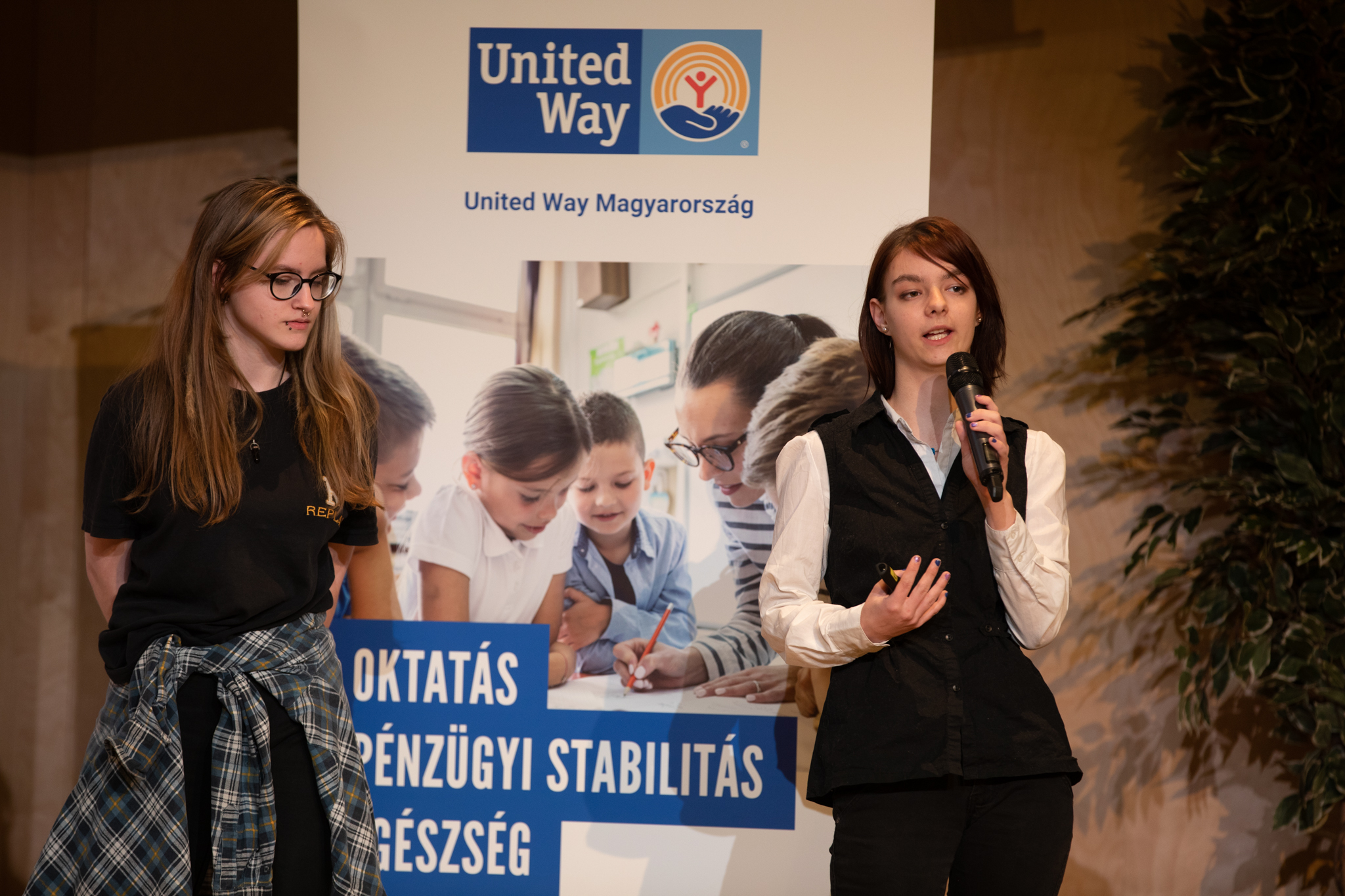Budapest Design Week: Whose work is it, anyway?

On the screen of an iPad attached to the wall, visitors are watching amazed the manufacturing process of a black candle holder on display in front of them. With its sharp-edged needles, the exhibit looks like some coral but it may well be melted wax which then hardened. In fact, the object is made from the combination of metal and plastic.
The former economics student and designer of the Gravity Candle Holder, Jolan van der Wiel, applied basic rules of physics and a magnet to shape his objects. Being intrigued by natural forces “that are all around us and create shapes”, he investigated materials until he came across some experiments in fluid plastic that contained metal particles. Combined with the right type of plastic, metal parts don’t escape, which they usually do if they meet a magnetic field. The designer constructed a machine of wooden frames and magnets and hung above the plastic. The created shapes are materialized magnetic fields. Pure physics assisted by man.
Crossovers, the main theme of the currently-running Budapest Design Week 2013, is about boundaries crossed in design. The topic selection is rather timely. Design, just as many fields, has been shaped by other disciplines. Designers have been lending ideas from architecture to biology while giving technology an enhanced role in the process. What has been shaped the most is undoubtedly designers’ mind. Undergraduates in design colleges are no longer are ruled by the main material they chose to work with. Instead, they work together and economy or social studies students to provide an object for a problem.
Biosciences and design is an unusual combination for jewelry. Biomedical engineers, designers and clinicians collaborated with British designer Tobby Kerridge, who combined metal, glass and bone tissue to produce engagement rings. Bone tissue was cultured in a laboratory, using cells donated by the couples during wisdom tooth extractions. This pairing will probably not become mainstream and is more of an experiment -- just like many more works in the Crossovers exhibiton.
CAD vs craft
Computer-aided design has been around for while and recently has seeped into every segment of design. For the new generation of designers, using the tools of the digital era is second nature. Those already on the market for ten years have no choice but follow. The use of digital aids is also a practical question. If a designer wishes to make ends meet with their produce, they need to embark on something that can be mass-produced but still unique.
The project L’Artisan Electronique combines pottery with new digital media. Clay is shaped by a 3D printer and not by hand. There is no traditional pottery wheel yet the resemblance between the artisanal and the computerized method is evident. Strangely, it is the hands that shape spotless objects, the ones produced by L’Artisan Electronique are not impeccable.
But that’s the beauty of it. In a designing process in which technology is ever more involved, the products of hands often result more perfect. Technology does give tools that allow many to design but is hardly enough. Were a physician to find out about the characteristics of the plastic-metal combo used in the Gravity Candle holder, he/she would not have started to craft objects: It takes a designer’s mind to do that.
SUPPORT THE BUDAPEST BUSINESS JOURNAL
Producing journalism that is worthy of the name is a costly business. For 27 years, the publishers, editors and reporters of the Budapest Business Journal have striven to bring you business news that works, information that you can trust, that is factual, accurate and presented without fear or favor.
Newspaper organizations across the globe have struggled to find a business model that allows them to continue to excel, without compromising their ability to perform. Most recently, some have experimented with the idea of involving their most important stakeholders, their readers.
We would like to offer that same opportunity to our readers. We would like to invite you to help us deliver the quality business journalism you require. Hit our Support the BBJ button and you can choose the how much and how often you send us your contributions.









